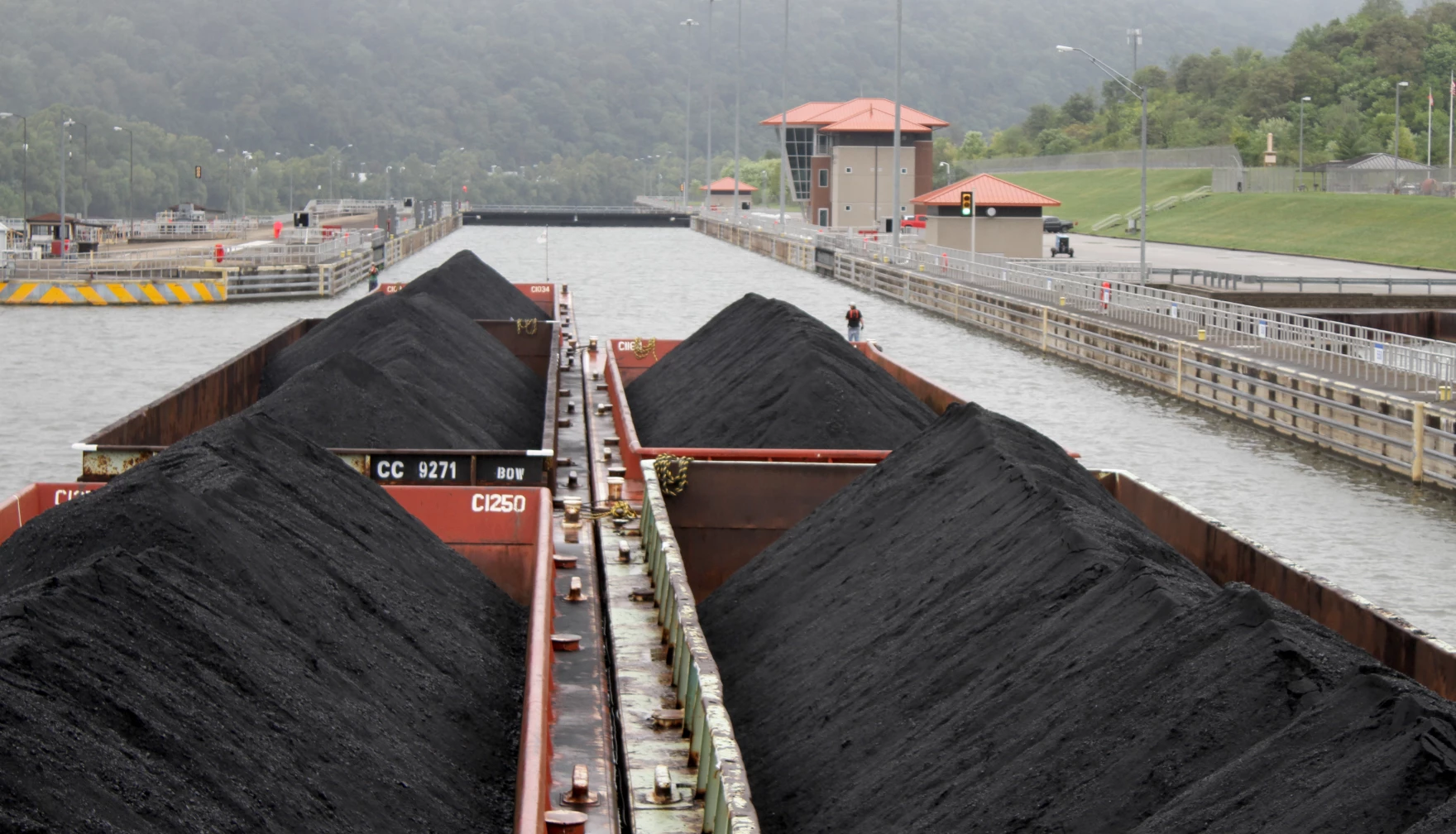In August, Pennsylvania-based Consol Energy announced it would merge with St. Louis-based Arch Resources to form Core Natural Resources. The combined company won’t just produce coal for generating electricity or making steel.
Curtis Tate spoke with Dan Connell, senior vice president for Consol innovations, about what else coal can do.
This interview has been edited for length and clarity.
Tate: Is coal used to make wind turbines and solar panels?
Connell: So looking at wind turbines as an example, a one-megawatt wind turbine requires more than 100 tons of coal just to make the steel and cement that are needed to build the turbine. And in the case of solar panels, coal provides the carbon reductant in the manufacturing process that’s needed to take quartz, which is mined and converted into elemental silicon, which ultimately goes into manufacturing the solar panel. We believe coal still has a very important role to play in a traditional way in meeting the world’s energy needs, but it also has a very critical role to play in evolving the world’s energy mix. Those are a couple of good examples of that.
Tate: What about batteries?
Connell: Batteries are expected to be a critical piece of the energy transition and the energy expansion, as we like to call it, because, let’s face it, the world’s energy needs are growing, and the world’s needs for electricity in particular are growing as we move to data centers and EVs and other forms of electrification. But today, the U.S. is highly import dependent from a battery supply chain standpoint. Coal is one of the abundant resources we have, and we’re looking at how can we use that resource to meet some of the needs in the battery supply chain?
Coal is carbon. Graphite, which is a major component of lithium ion-batteries, is carbon. An example of something we’re working on is, can we take a whole silicon oxy carbide composite material, domestically sourced, and develop that as an active anode material that could serve the same function as graphite in batteries, but have a very different supply chain profile, and hopefully afford some performance advantages as well.
Tate: Are you looking for new uses for coal considering its decline in the power sector?
Connell: We have hundreds of millions of tons of waste coal available to us in the United States, combining that with recycled plastic, and there’s a huge opportunity to increase volumes of plastic being recycled and use that to form composite building materials that can substitute for some conventional building products. So one of the first product prototypes that we’ve developed is decking, and we’re on path to get some prototype decks out in public places here, hopefully by the end of this year. But we think that’s kind of the tip of the iceberg. And again, it’s about how do we take this abundant carbon resource that we are blessed to have and find new areas where it can create value in meeting a need of the future?
Tate: How is that different from the composite building materials already on the market?
Connell: We need massive quantities of these building materials in the future, we need to make sure that we’re using the most sustainable feedstocks that we can to make them. So if you can start with recycled plastic and a waste stream that’s currently one of the industry’s larger environmental liabilities, and repurpose that into something that meets this building product need, that’s a great place to start. We want to be cost effective and cost competitive, and we want to introduce technical advantages where we can and sometimes with coal, they’re counterintuitive, but when you look at coal versus something like wood, moisture uptake is one area where coal can provide some advantages, and ironically, even areas like flammability.
Tate: What does coal do to concrete to improve it?
Connell: As coal plants have started to retire in the United States, the availability of fly ash has become critically important to to the concrete industry, making sure that they have that that supply, and there’s efforts underway to to reclaim fly ash from from existing disposal sites, so that it can can go into those products. In the future, there are possibilities to get creative with ways that you might use coal in concrete. One of the areas that we’ve done some R&D work is developing lightweight aggregate from coal that can go in as kind of a filler and reinforcing material in lightweight concrete applications.
Tate: What about aerospace applications?
Connell: It’s actually aerospace that’s the most commercially advanced of our initiatives. So today, we take coal, we use it to produce this carbon foam material, which is engineered to have certain properties that make it well suited for aerospace tooling. It’s a lightweight, highly machinable material. You can machine it to one thousandths of an inch tolerance to get some very precise contouring that’s needed to make aerospace parts. And it also has what’s called a low coefficient of thermal expansion. So that means when you heat it up, it doesn’t tend to change size very much. And when you’re curing an aerospace part that’s made from carbon fiber composite, it’s important to make sure that the tool that you’re using to do that kind of matches the behavior of the part that you’re trying to cure, and the foam material made from coal is kind of perfectly suited for that application when you’re talking about carbon fiber composite. So today, there is a market for using these carbon foam tools made from coal to make aerospace parts, and those parts have gone into a number of both commercial and military aircraft that you would know very well.
